![]()
![]()
![]()
Use LEFT and RIGHT arrow keys to navigate between flashcards;
Use UP and DOWN arrow keys to flip the card;
H to show hint;
A reads text to speech;
43 Cards in this Set
- Front
- Back
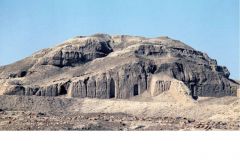
|
Formal analysis 12. The White Temple and its ziggurat Uruk (modern Warka, Iraq) / Sumerian 3500–3000B.C.E. |
|
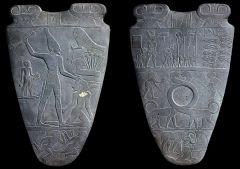
|
Formal analysis 13. Tablette of King Narmer Predynastic Egypt 3000 - 2,920 B.C.E. |
|
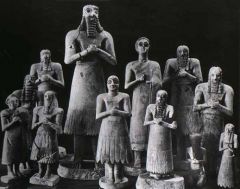
|
Formal analysis 14. Statues of votive figures from the Square Temple at Eshnunna Modern Tell Asmar, Iraq / Sumerian 2,700 B.C.E. |
|
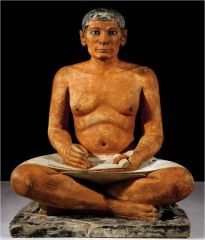
|
Formal analysis 15. Seated Scribe Saqqara, Egypt / Old Kingdom Fourth Dynasty 2620–2500 B.C.E.
|
|
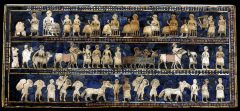
|
Formal Analysis 16. The Standard of Ur from the Royal Tomb of Ur modern Tell el-Muqayyar, Iraq / Sumerian 2600–2400 B.C.E.
|
|
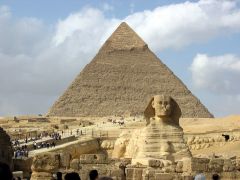
|
Formal analysis 17. The Great Pyramids (Menkaura, Khafre, Khufu) & Great Sphinx Giza, Egypt / Old Kingdom Fourth Dynasty 2550–2490 B.C.E.
|
|
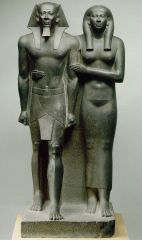
|
Formal Analysis 18. King Menkaura and Queen Egypt/ Old Kingdom/ Fourth Dynasty 2490-2472 B.C.E. |
|
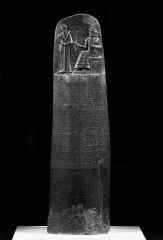
|
Formal Analysis 19. The Code of Hammurabi Babylon, Modern Iran/ Susian 1,792-1,750 B.C.E. |
|
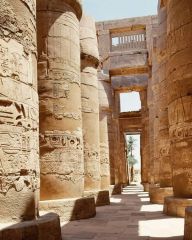
|
Formal Analysis 20. Temple of Amun-re and Hypostyle Hall of Karnak Near Luxor, Egypt/ New Kingdom/ 18th and 19th Dynasties Temple : 1550 B.C.E. Hall: 1250 B.C.E.
|
|
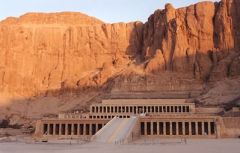
|
Formal Analysis 21. Mortuary temple of Hatshepsut Near Luxor, Egypt/ New Kingdom/ 18th Dynasty 1,473-1,458 B.C.E. |
|
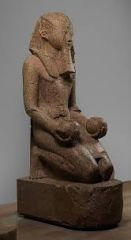
|
Formal analysis 21. Kneeling statue of Queen Hatshepsut Near Luxor, Egypt/ New Kingdom/ 18th Dynasty 1,473-1,458 B.C.E.
|
|

|
Formal Analysis 22. Akhenaton, Nefertiti, and the Three Daughters Egypt/ New Kingdom (Armana)/ 18th Dynasty 1,353-1,335 B.C.E. |
|
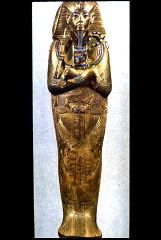
|
Formal Analysis 23. Tutankhamun’s tomb, intermost coffin Egypt / New Kingdom 1,323 B.C.E. |
|

|
Formal Analysis 24. The Last Judgement of Hu-Nefer from his tomb (page from the Book of the Dead) Egypt/ New Kingdom / 19th Dynasty 1,275 B.C.E.
|
|
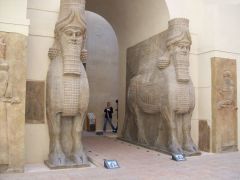
|
Formal analysis 25. Lamassu from the citadel of Sargon II, DurSharrukin Modern Khorsabad, Iraq Neo Assyrian 720-705 B.C.E. |
|
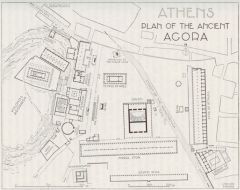
|
Formal Analysis 26. Athenian agora Archaic through Hellenistic Greek 600 B.C.E.–150 C.E. |
|
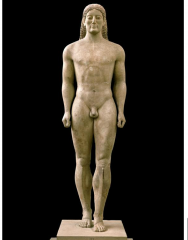
|
Formal Analysis 27. Anavysos Kouros Archaic Greek 530 B.C.E. |
|

|
Formal Analysis 28. Peplos Kore from the Acropolis Archaic Greek 530 B.C.E. |
|
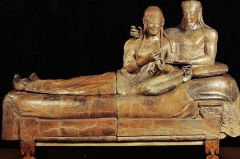
|
Formal Analysis 29. Sarcophagus of the Spouses Etruscan 520 B.C.E.
|
|
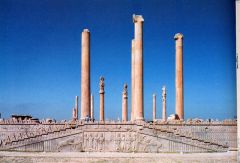
|
Formal Analysis 30. Audience Hall (apadana) of Darius and Xerxes Persepolis, Iran/Persian 520-465 B.C.E.
|
|
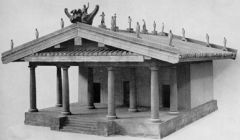
|
Formal analysis 31. Temple of Minerva and sculpture of Apollo Veii, near Rome, Italy / Master sculptor Vulca 510-500 B.C.E. |
|
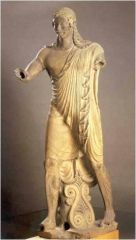
|
Formal Analysis 31. Sculpture of Apollo Veii, near Rome, Italy / Master sculptor Vulca 510-500 B.C.E. |
|

|
Formal Analysis 32. Tomb of the Triclinium Tarquinia, Italy / Etruscan 480-470 B.C.E. |
|

|
Formal analysis 33. Niobides Krater Anonymous vase painter of Classical Greece known as Niobid Painter 460-450 B.C.E. |
|
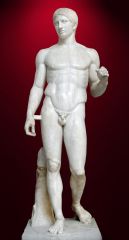
|
Formal Analysis 34. Doryphoros (Spear Bearer) Polykleitos Original 450-440 B.C.E.
|
|
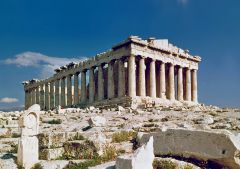
|
Formal Analysis 35. Acropolis - Parthenon Athens, Greece Iktinos and Kallikrates 447–424 B.C.E. |
|
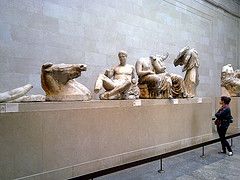
|
Formal Analysis 35. Acropolis - Helios, Horses, and Dionysus (hercules?) Athens, Greece Iktinos and Kallikrates 447–424 B.C.E.
|
|

|
Formal Analysis 35. Acropolis - Temple of Athena Nike Athens, Greece Iktinos and Kallikrates 447–424 B.C.E.
|
|

|
Formal Analysis 35.Acropolis - Victory Adjusting her Sandal Athens, Greece Iktinos and Kallikrates 447–424 B.C.E. |
|
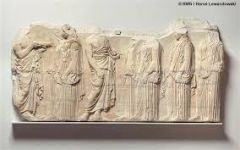
|
Formal Analysis 35. Acropolis - Plaque of the Ergastines Athens, Greece Iktinos and Kallikrates 447–424 B.C.E.
|
|

|
Formal Analysis 36. Grave Stele of Hegeso Attributed to Kallimachos 410 B.C.E.
|
|
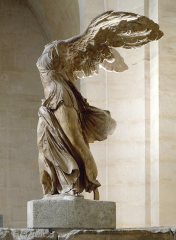
|
Formal Analysis 37. Winged Victory of Samothrace Hellenistic Greek 190 B.C.E. |
|
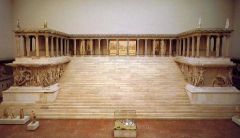
|
Formal Analysis 38. The Great Altar of Zeus and Athena at Pergamon Asia Minor (Present day Turkey) Hellenistic Greece 175 B.C.E.
|
|
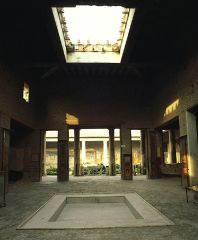
|
Formal Analysis 39. House of Vettii Imperial Roman / Pompeii, Italy Second century B.C.E. Rebuilt - 62–79 C.E.
|
|
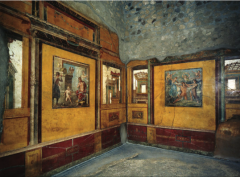
|
Formal Analysis 39. Ixion Room of the house of Vetti Imperial Roman / Pompeii, Italy Second century B.C.E. Rebuilt - 62–79 C.E.
|
|

|
Formal Analysis 40. Alexander Mosaic from the House of Faun Pompeii, Republican Roman 100 B.C.E. |
|
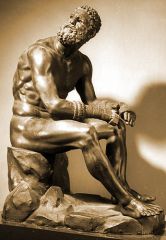
|
Formal Analysis 41. Seated Boxer Hellenistic Greece 100 B.C.E.
|
|
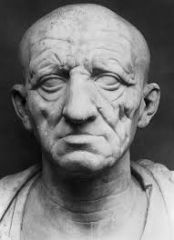
|
Formal Analysis 42. Head of a Roman Patrician Republican Roman 75-50 B.C.E.
|
|

|
Formal Analysis 43. Augustus of PrimaPorta Imperial Roman Early First Century C.E. |
|

|
Formal Analysis 44. Colosseum (Flavian Amphitheater) Rome, Italy Imperial Roman 70-80 B.C.E. |
|
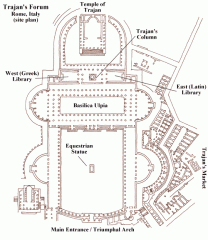
|
Formal Analysis 45. Forum of Trajan, Reconstruction drawing, Basilica Ulpia (reconstruction drawing), Trajan Markets, Column of Trajan Rome, Italy Apollodorus of Damascus Forum and markets: 106–112 C.E Column completed 113 C.E.
|
|
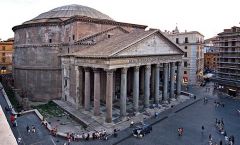
|
Formal Analysis 46. Pantheon Imperial Roman 118–125 C.E.
|
|
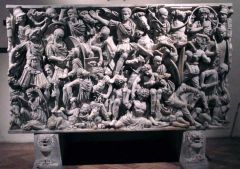
|
47. Ludovisi Battle Sarcophagus Late Imperial Rome 250 C.E. |

